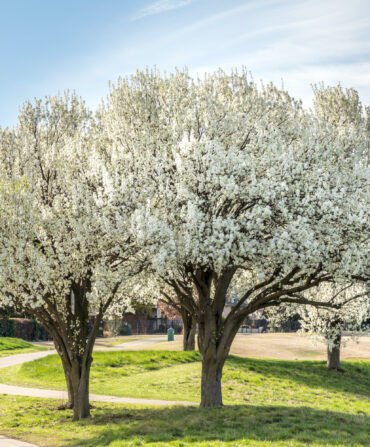As the inimitable decorator Sister Parish once said, “Innovation is often the ability to reach into the past and bring back what is good, what is useful, what is lasting.” That’s certainly true of the new collaboration between the archivists and researchers in Colonial Williamsburg and the textile and wallpaper wizards at the storied fabric house Schumacher titled “Homecoming.”
The collection, which launched this fall, marks the rekindling of a relationship between the two history-loving companies that began with a seventy-year run of design projects between 1941 and 2010. “Schumacher had a long love affair with Colonial Williamsburg, but, sometime before I became its creative director, we broke up,” says Schumacher’s creative director, Dara Caponigro. “Well, we just couldn’t stay away from each other for long, and when we approached this new collection, we really went for it, selecting the most special patterns from the Colonial Williamsburg archive and sparing no expense or effort to make them impeccably.”
The newest iterations include fabrics, tapes, wall coverings, and pillows, and the research for them began just before the pandemic set in. So instead of working together in person, decisions were made over Zoom. “No one could travel, so we couldn’t take the usual approach of designers coming to Williamsburg to go behind the scenes into Colonial Williamsburg’s incredible textile storage areas,” says Liza Gusler, the associate director of brand and licensing for Colonial Williamsburg. “I spent weeks sorting through our archive, and Schumacher made initial selections from several hundred fabrics.” Production spanned the globe, from the United States, to India, to Italy, and beyond.
Each new item has a story. “I’m a history geek and former curator at Colonial Williamsburg and knew that we needed not just any old and lovely silk damask, but gorgeous fabrics with interesting histories,” Gusler says. “For instance, I remembered a damask that was a fragment of a gown that Martha Dandridge Custis Washington wore in the 1750s. It became our Dandridge Damask. Schumacher then adapted it into a blend of linen, cotton, and silk to update it and make it wear better.”

Gusler also loves the Blair Épinglé textile inspired by a silk velvet suit worn by John Blair, Supreme Court judge and Constitution signer for Virginia, in about 1760. The team uncovered the original colors used (dandy peaches and greens) inside the back pleat of the jacket where it did not fade.

“These very luxurious fabrics were worn in colonial Virginia, but we also wanted textiles that told a broader American story,” Gusler says. And another design, the Crawford Linen Check, represents “Virginia cloth,” a coarser material made in protest of British taxes on imported fabrics. This pattern is named for John Crawford, the manager of the weaving manufactory in Williamsburg during the Revolution.

Thanks to the renowned interior designer Charlotte Moss, the new collection is already on display inside Westover on the James River in Virginia, one of the grandest houses to survive from the Colonial period. Many have already been mixed in with the existing design and existing furniture at the Williamsburg Inn as well, a fitting backdrop. Still, Gusler maintains that the patterns are just as suited to environments outside the historic realm. “Choosing for my house,” she says, “I’d do a room in Ariana Floral Stripe linen in the Chelsea Garden colorway with its charcoal stripe and yummy reds and greens.”









